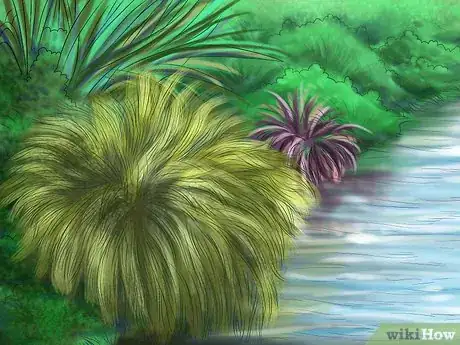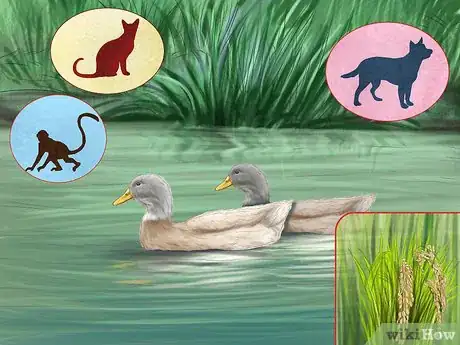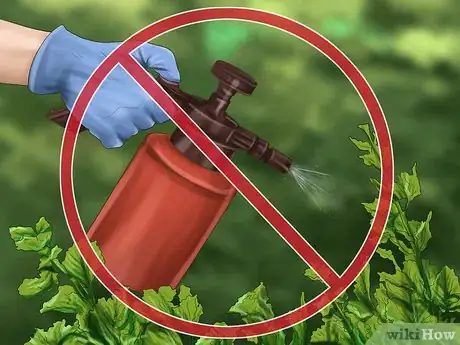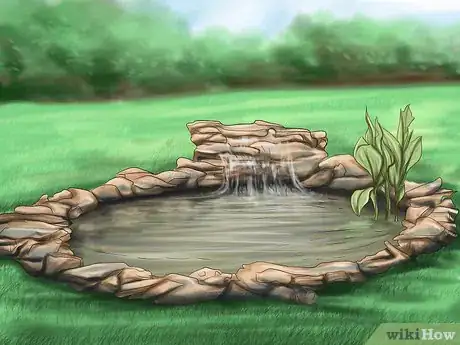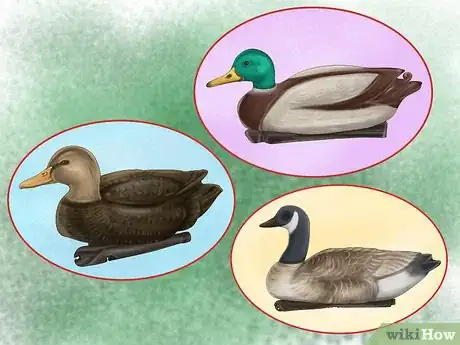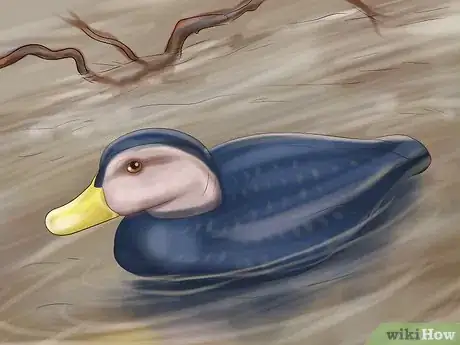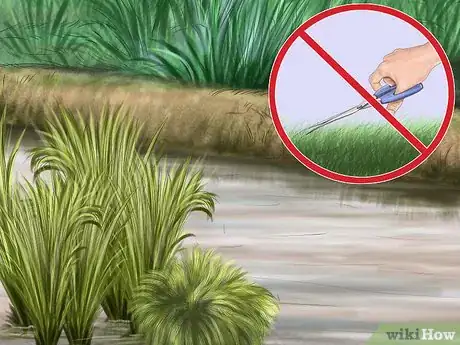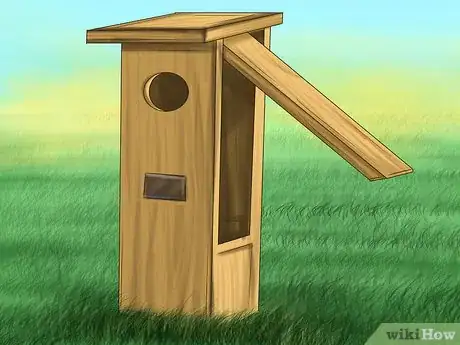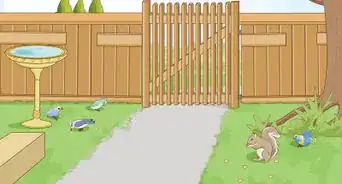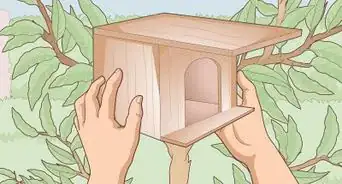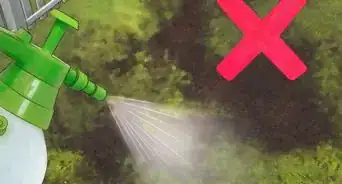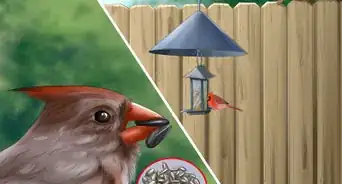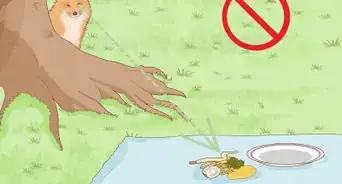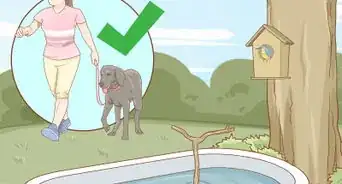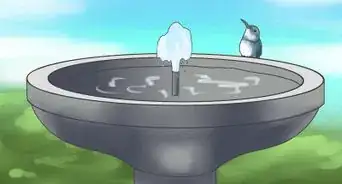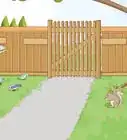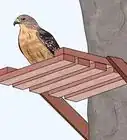This article was co-authored by wikiHow Staff. Our trained team of editors and researchers validate articles for accuracy and comprehensiveness. wikiHow's Content Management Team carefully monitors the work from our editorial staff to ensure that each article is backed by trusted research and meets our high quality standards.
There are 8 references cited in this article, which can be found at the bottom of the page.
wikiHow marks an article as reader-approved once it receives enough positive feedback. In this case, 86% of readers who voted found the article helpful, earning it our reader-approved status.
This article has been viewed 146,372 times.
Learn more...
Ducks are birds that tend to migrate, and because of this, it can be difficult to get them to stay in one place permanently. They are generally attracted to small bodies of water containing plants that they can feed on. Attracting ducks is a matter of creating the best and safest environment that will make them want to migrate to your lake or pond.
Steps
Creating an Enticing Food Plot
-
1Grow aquatic plants both inside and around your pond. Ducks eat a variety of aquatic plants and will settle in areas where they will be able to feed. Some examples of aquatic plants that ducks are attracted to are Widgeon Grass and Wild Celery.
- Wild celery grows under water up to the surface and produces seeds that ducks feed on. Ducks will also dive down to eat the tuber part of the plant.[1]
- To plant the wild celery, be sure the bulbs are covered with a cheesecloth to prevent sunlight from getting to them. Be sure to plant the wild celery in less than 3 feet of water.[2]
- Widgeon Grass grows completely underwater and provides food for ducks, geese, and fish. It is grown similarly to Wild Celery, with bulbs planted carefully in shallow water away from direct sunlight.[3]
-
2Plant Chufa, a breed of nut-grass. Chufa can be planted anywhere near a pond and is a great source of fat and protein for waterfowl. It grows easily in wet environments and attracts ducks, who love to eat it. It is a simple grass to plant because it does not take much upkeep, and it does not require fertilizer once it is planted.[4]
- Plant chufa seeds approximately 1 to 2 inches deep into soil near your pond and in rows 2 to 4 inches apart.[5]
Advertisement -
3Create an environment that includes millets, reeds, and tuberous plants on dry land. When the plants mature and then are hydrated by a pond close by, ducks will be attracted to them when they are migrating. Rotating these plants every third year is recommended so that the soil doesn’t become nutrient deficient.
-
4Incorporate rice plants into the environment. Ducks are very attracted to rice, which also needs a wet environment to grow. Try adding Japanese millet to your plot. This is used by duck hunters to attract ducks. The millet should be planted in a dry area near the pond. It grows quickly, and stands about 2 to 4 feet tall when it is fully mature.[6]
-
5Avoid using insecticides on your property. Insecticides and herbicides kill off bugs that ducks love to eat and are also poisonous to them. To attract ducks, don’t use these chemicals on your lawn or near the pond where you’re hoping to attract them.
-
6Ensure your duck has clean drinking water. Be sure that any ducks you attract to your pond are kept healthy by providing them with clean drinking water. Ducks can easily contract botulism, so be sure that their pond is clear of dead animals and pesticides.[7]
- You can also try keeping a galvanized steel dish or tub of fresh water near the pond. Be sure to clean it daily to make sure the water remains clear.
Making the Environment Hospitable
-
1Be sure to have a pond nearby. In order to attract ducks, you must have an environment that is like their natural habitat. Your backyard, for example, is poorly suited to attracting ducks. However, if you have a lake or large pond on your property, then you will likely be able to attract ducks to it.
- Ducks are notoriously difficult to attract. It’s definitely possible to attract them, but It’s also important to remember that they are migratory birds at heart.
-
2Buy duck decoys to place around their habitat. These decoys will attract migrating ducks to come to take a closer look at the surrounding area. Be sure to invest in realistic-looking duck decoys.
- There are different types of duck decoys, including mallard duck, black duck, and goose decoys. Geese make excellent decoys, as ducks and geese frequently live together in similar habitats, so ducks are naturally drawn to them.[8]
-
3Position decoy ducks near the water's edge next to your food plot. This way, the ducks will be attracted by the decoy and stay for the food. It's important to position the decoys in a realistic manner that mimics how real ducks might gather.[9]
- Avoid placing lots of decoys in a neat group on your pond. Instead, spread them out, placing two or three on your pond and a couple nearby on land. The key is to make the decoys seems as believable as possible to the ducks you're hoping to attract.[10]
-
4Refrain from housing other animals near the pond. Ducks are skittish and will not want to nest if there are other animals in close proximity. They may also become defensive.
-
5Allow grasses around your pond to grow tall. Ducks are attracted to places with long grasses where they will blend in and be protected from predators. Avoid trimming the grasses and brush surrounding your pond.
Providing Shelter
-
1Build a coop. Ducks need a house with good ventilation and plenty of space to move around. When you Build a Wood Duck House, it's important to make it spacious enough for the number of ducks you anticipate housing. Six to eight feet by four to five feet is a good, standard size for a duck house.
- Your duck house should have a solid floor (vinyl tile works well). They can lay on the ground, but having this solid flooring prevents predators from burrowing into their coop.[11]
-
2Build the coop with wood planks. Keep 1 to 2-inch gaps between the planks for ventilation, and make sure that the coop is at least 3 feet tall. Because ducks spend a lot of time in water and exhale a lot of moisture when they breathe, proper ventilation is essential to preventing frostbite in the winter and mold/mildew growth in the summer.[12]
-
3Keep the coop floor dry. The ducks can get infections if they are laying in urine or feces, so try to keep the coop floor clean. Covering the floor with some absorbent materials can help keep it dry and make it easier to clean.
- Try covering the coop floor with sand, straw, or pine shavings to give the ducks a soft, clean space to lay down. It's important to provide them a space where they can lay down and keep their abdomens dry.[13]
Community Q&A
-
QuestionI bought 3 ducks ( 2 hens, 1 drake) a month ago and have kept them penned up until today. We turned them out on the pond, and they swam for a few minutes, then got out on the other side of pond and won't come back to me. How do I get them back? I have food and water in the pen for them and left it open.
 Community AnswerThey will be excited exploring their natural world just now. They will catch their own food, find places to hide, and may even build a nest. But they will most likely come back to you for food. I don't think they will be happy to stay penned up; you had the right idea letting them swim and enjoy being ducks. They'll probably stay nearby, other ducks may even join them in and around the pond.
Community AnswerThey will be excited exploring their natural world just now. They will catch their own food, find places to hide, and may even build a nest. But they will most likely come back to you for food. I don't think they will be happy to stay penned up; you had the right idea letting them swim and enjoy being ducks. They'll probably stay nearby, other ducks may even join them in and around the pond. -
QuestionHow often should I clean a duck's house?
 Amy HarrisonTop AnswererAt least once every week.
Amy HarrisonTop AnswererAt least once every week. -
QuestionHow big should a duck pond be to attract wild mallards?
 Community AnswerDucks prefer shallow bodies of water with sloping sides, but the actual size probably doesn't matter too much as long as they have room to swim around.
Community AnswerDucks prefer shallow bodies of water with sloping sides, but the actual size probably doesn't matter too much as long as they have room to swim around.
Things You’ll Need
- Pond or lake
- Plant seeds, such as Wild Celery, Widgeon Grass, Chufa, Japanese Millet
- Cheesecloth
- Duck decoys
- Wood planks
- Straw or sand
- Hammer and nails
- Vinyl or another solid flooring
References
- ↑ http://www.kestersnursery.com/water_celery.htm
- ↑ http://www.kestersnursery.com/water_celery.htm
- ↑ http://aquaplant.tamu.edu/plant-identification/alphabetical-index/widgeon-grass/
- ↑ https://scwaterfowlassociation.wordpress.com/2015/05/08/how-do-you-grow-chufa-for-ducks/
- ↑ https://scwaterfowlassociation.wordpress.com/2015/05/08/how-do-you-grow-chufa-for-ducks/
- ↑ http://plants.usda.gov/plantguide/pdf/pg_eces.pdf
- ↑ https://www.forthebirdsdvm.com/pages/care-and-feeding-of-pet-ducks
- ↑ http://www.wildfowlmag.com/gear-accessories/decoys/why-geese-make-the-best-duck-decoys/
- ↑ http://www.ducks.org/hunting/decoys/3-decoy-strategies-for-ducks
About This Article
To attract ducks, grow aquatic plants inside and around your pond, such as Widgeon Grass and Wild Celery. Alternatively, plant chufa, a great source of fat and protein for waterfowl, near a pond or body of water. You should also allow grasses around your pond to grow tall, since ducks like places where they feel protected from predators. Additionally, place duck decoys around the habitat to attract migrating ducks. To learn how to build a coop for the ducks, keep reading!

